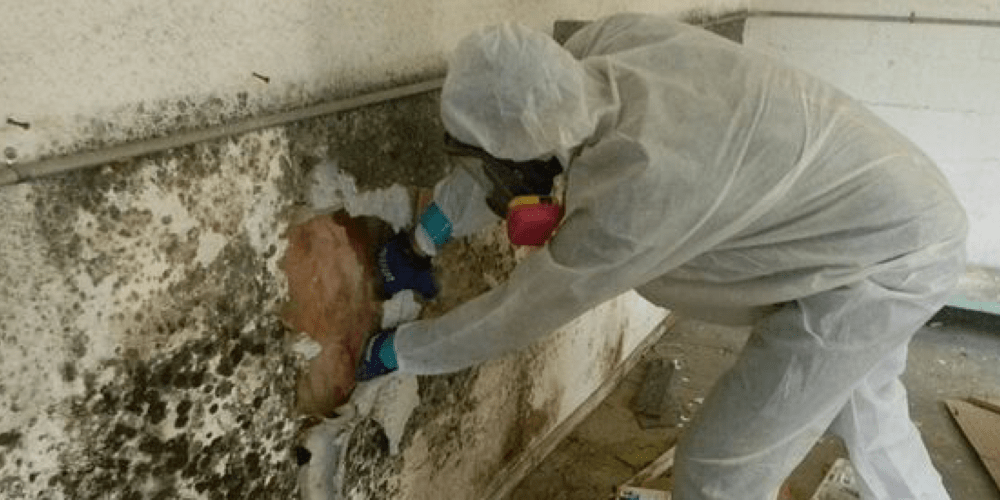San Diego is renowned for its idyllic weather, beautiful beaches, and vibrant culture. However, beneath this sunny exterior lies a hidden threat that many homeowners might not consider: mold growth. Despite the region’s mild climate, certain factors contribute to an environment where mold can thrive. Understanding these conditions and implementing preventive measures is essential for safeguarding your home and maintaining a healthy living space.
1. Mold Growth Prevention in San Diego Homes: Humidity Levels.
Although San Diego is not as humid as other regions, the humidity levels can still rise significantly, especially during the winter months. Humidity levels often exceed 60% in the cooler months, creating an ideal environment for mold spores to settle and proliferate. This is particularly true in poorly ventilated areas such as attics, basements, and bathrooms. The Climate of San Diego: A Double-Edged Sword. San Diego boasts a Mediterranean climate characterized by mild, wet winters and hot, dry summers. While this weather is generally favorable for outdoor activities, it also presents unique challenges for homeowners regarding mold growth. Here are some key factors that make San Diego a breeding ground for mold:
2. Coastal Proximity
Being close to the Pacific Ocean means that San Diego experiences coastal breezes and moisture-laden air. This added moisture can lead to condensation in and around your home, especially in areas with fluctuating temperatures. If not properly managed, this condensation can contribute to mold growth.
3. Seasonal Rainfall
San Diego receives most of its rainfall during the winter months, with storms that can lead to leaks and water intrusion in homes. Even small leaks can create the damp conditions that mold loves. The potential for flooding during heavy rains can further exacerbate the issue, leading to extensive mold growth if not addressed quickly.
4. Temperature Fluctuations
Mold spores thrive in warm environments. San Diego’s mild temperatures, especially in the fall and winter, provide a conducive environment for mold growth. When temperatures drop at night but rise during the day, the moisture in the air can condense, creating a perfect breeding ground for mold.
The Impact of Mold on Your Home and Health
Mold can have significant consequences, both structurally and health-wise. It can weaken the integrity of your home, leading to costly repairs and decreased property value. Additionally, mold exposure can trigger allergic reactions, respiratory issues, and other health problems, particularly for individuals with pre-existing conditions like asthma.
Prevention Tips for Homeowners
Given the favorable conditions for mold growth in San Diego, it’s crucial for homeowners to take proactive measures to prevent mold infestations. Here are some effective strategies:
1. Maintain Low Indoor Humidity
To inhibit mold growth, keep indoor humidity levels below 60%. You can achieve this by:
Using Dehumidifiers: Invest in a dehumidifier, especially for areas prone to moisture, like basements and bathrooms.
Ventilating Your Home: Open windows and doors when weather permits to allow fresh air to circulate. Use exhaust fans in bathrooms and kitchens to reduce moisture.
2. Seal and Insulate
Proper sealing and insulation can significantly reduce the risk of moisture intrusion:
Seal Windows and Doors: Inspect for gaps or leaks around windows and doors and seal them with weather stripping or caulk.
Insulate Pipes: Insulating pipes can prevent condensation from forming during temperature fluctuations.
3. Regularly Inspect Your Home
Routine inspections can help identify and address potential mold issues before they escalate:
Check for Leaks: Regularly inspect roofs, plumbing, and appliances for leaks. Address any leaks immediately to prevent moisture buildup.
Look for Visible Mold: Keep an eye out for any signs of mold growth, particularly in dark, damp areas. If you notice mold, take steps to remediate it quickly.
4. Control Indoor Temperature
Maintaining a consistent indoor temperature can help prevent mold growth:
Use Air Conditioning: In warmer months, air conditioning can help lower humidity levels and maintain a stable temperature.
Avoid Temperature Fluctuations: Try to keep your home’s temperature consistent, as rapid changes can contribute to condensation.
5. Properly Store and Maintain Indoor Items
Be mindful of how you store items in your home:
Use Mold-Resistant Products: Consider using mold-resistant paint and drywall, especially in areas prone to moisture.
Store Items in a Dry Place: Avoid storing items like cardboard boxes directly on the ground, as they can absorb moisture. Use plastic containers instead.
6. Maintain Your Yard
Your yard can also influence the moisture levels around your home:
Direct Water Away from Your Foundation: Ensure that gutters and downspouts are clear and direct water away from your home’s foundation.
Trim Vegetation: Keep trees and shrubs trimmed to allow sunlight to reach your home and reduce moisture retention.
7. Know When to Seek Professional Help
If you discover significant mold growth or suspect hidden mold behind walls or under carpets, it may be time to call in the professionals:
Mold Remediation Services: A qualified mold remediation service can assess the situation and ensure thorough removal and prevention.
While San Diego’s climate can create favorable conditions for mold growth, understanding these factors and implementing effective prevention strategies can protect your home and health. Mold growth prevention in San Diego homes can be by maintaining low humidity levels, ensuring proper ventilation, and conducting regular inspections, homeowners can minimize the risk of mold infestations. If you suspect a mold problem, don’t hesitate to seek professional assistance to safeguard your home from this hidden threat. Remember, a proactive approach today can save you from costly repairs and health issues tomorrow.
Don’t forget to connect with us on our social media channels.
Facebook: www.facebook.com/instaterestoration
Instagram: www.instagram.com/instaterestoration


